It is a glorious day in Brisbane today, the air is crisp and the sky is clear. Where I came from it would be plum blossom raining season now. Have you ever wonder exactly what you miss about a place when you are missing it? My pen is blunt but I have flour in my hand to paint:
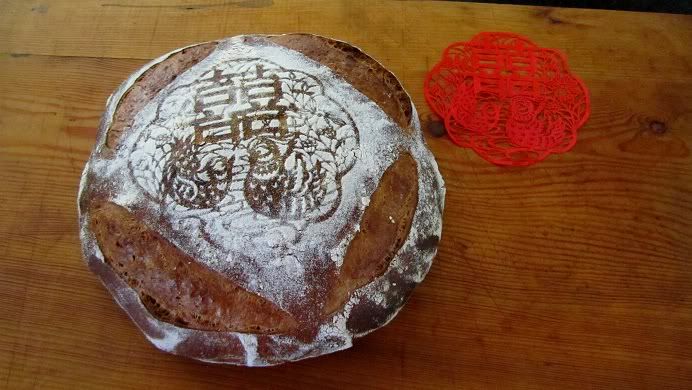
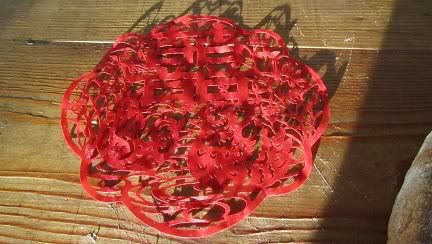
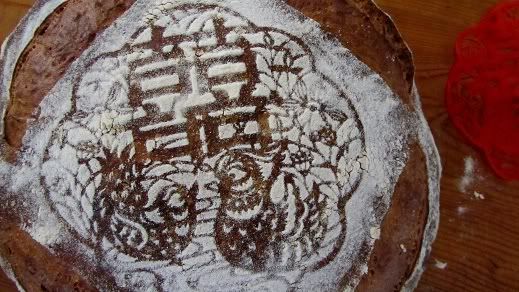
Since my last post, I had made a dozen of these Miches, each time a two kilo loaf. Yes, a dozen of these. I have had a fixation on Miche-style breads and I need to wean myself off it. Last year I made a day trip to Sydney to visit some of the bakeries down there and I found my dream Miche with that beautiful translucent crumb:[b] Sonoma Bakery in Paddington, Sydney[/b]. I wrote up a[b] post[/b] about it.
The combination of flours that I have been using for my recent Miche plays is:
- 65% bread flour
- 15% organic stoneground whole wheat flour
- 10% organic stoneground spelt
- 5% organic stoneground rye
- 5% organic buckwheat
My results have not been to my satisfaction. It is not the holes that I am looking for:
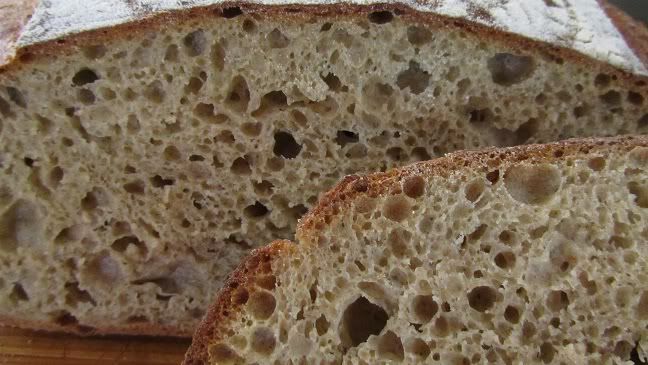
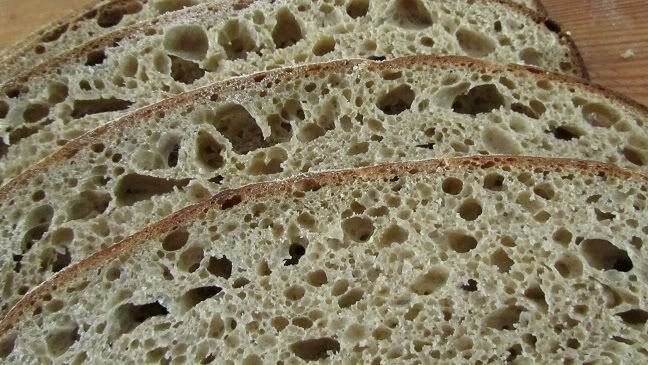

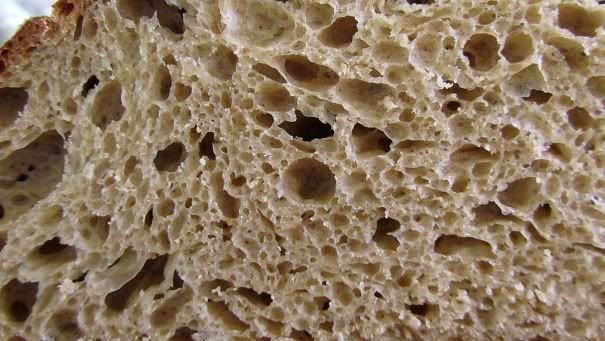
It is each and every cell that I am focusing on. There is a certain translucent crumb quality that I am looking for, similar to[b] the T110 Miche [/b]that I made more than a year ago (but that Miche was only 1.5 kilo). There is a Chinese character,[b][size=20] 醇[/size][/b], describing a mellow wine beautifully fermented from the best grapes available. I don't know the comparable English word for it (Ron, can you help?). Fermentation is a complex process that cannot be hurried. While it is not easy to achieve a delicate balance bringing all factors together beautifully in fermentation, more and more I find that if the flour is not right, there is no chance for [b][size=20] 醇[/size][/b] to happen in bread. Not all flours have equal fermentable qualities.
I find it is quite important for me to have the flour malted at the miller level to achieve the crumb quality that I look for in a big Miche. David and Glenn make beautiful Miches using Keith Giusto Bakery Supply's Organic Type 85 malted flour which is similar to the French T110 flour that I used, both being 90% extraction. (I didn't enjoy the French T80 flour that I used for My T80 Miches. In memory, I had some tough time working with the flour; I may be wrong but I think that particular T80 flour was not malted.)
Any good ingredient is a two-edge sword; it can also harm your result. James MacGuire wrote that fava-bean flour, a sauce of malt, is allowed as an ingredient for the bread to be called "Pain de tradition" under French consumer protection laws because it has long been used (whereas ascorbic acid is not permissible as the latter's use was only since the 1950s). He cautions against oxidation of the dough with malt. This is no so much a problem for us if we are careful not to over-ferment our dough. These days we go for a slightly under-proved dough for better oven spring anyway.
Next, I find dough size and shape do make a difference in outcome. A big round Miche is about the hardest for a home baker to perfect as any other shape. It wouldn't be as hard if the shape is a batard because the thickest part is smaller. Given the same shape, i.e., the round shape, there is a big difference between a 1.5 kilo dough and a 2 kilo one. It is a lot easier to achieve a great result with a 1.5 kg dough. My baking stone measures 34 cm by 34 cm. It can take a 2 kilo dough which will bake to 30 to 32 cm in diameter depending on how tall the volume. Several times when I didn't load my doughs dead-set in the centre of the stone, they baked with bits hanging on the edge of the stone. Scary to watch.
I normally love a challenge, but I am losing steam fast. I need good whole grain flour for a good old Miche. White flour just won't do. I read that in the States and in Europe there are many good millers who would work with bakers to produce the best flours for the bakers to use. I have yet to find one such miller in my area. I am invited to visit an organic mill, 170 km from where I live, next week. I hope to have good news to report.
Shiao-Ping
- Shiao-Ping's Blog
- Log in or register to post comments
Your crumb shows perfect fermentation and dough handling. And I love the stencil.
I am also convinced that these 2 kg miches have a fuller flavor than smaller loaves, although I do not really understand the chemistry.
David
Several master bakers have said water does not give flavour to the bread. It is flour, through proper fermentation, that gives the intrinsic flavour. Would it be because in a bigger bread there is more flour for us to chew on than in a small one and therefore a bigger bread tastes fuller flavour to us? (This statement may not be as silly as it sounds because, after all, most bigger breads are denser than their smaller versions.) Or, is there a bio-chemical explanation to it? I don't know the answer myself.
There is a type of dense buns from Northern China called [b][size=18]山東饅頭[/size][/b] (pronounced as "shan-dong-maan-tou"). The good ones are made from old doughs and we can say that these are the Chinese version of the Western sourdoughs except that they are steamed, not baked. Their claim to fame is that they are extremely dense (hydration less than 45%) and extremely flavourful. They are strictly flour, water, a little bit of sugar and a little bit of salt. I never like anything dense with no adds-in. Had I not tasted one of these "shan-dong-maan-tou's" I would not have believed how flavourful they are. The more you chew the sweeter it tastes. If you smell it you would be amazed how incredibly fragrant the crumb is.
i havent visited for a little while but what a welcome return, as always beautiful bread and a great write up Shiao-Ping. well done
kind regards Yozza
The stenciling is a great peice of art Shiao-Ping.
I love what you have done with his post as well, providing a great bit of knowledge in the topic of flours. I hope you find your flour mix before giving up on miches. : )
Shiao-Ping, Thank you for this demonstration of a great method for creating Eatable Art,
Ron
Beautiful looking miche, Shiao Ping!
醇 : The best English equivalents are full-flavoured, well-matured, full-bodied or mellow as you first suggested. In the context of bread perhaps it would be better to talk about the: full development or full maturation of flavour.
Did someone get married recently?
All the best,
Syd
Hi Syd
Thank you for the translation of [b][size=18]醇[/size][/b]. I was hesitant to use those words because some words seem to have been over-used and have lost some meaning, but you are right. Thank you.
Did someone get married recently? you asked. Richard chartres, Bishop of London, said on 29th April at Westminster Abbey that "In a sense every wedding is a royal wedding with the bride and the groom as king and queen of creation, making a new life together so that life can flow through them into the future." When I heard it, I was thinking how true that is and how far our human race has progressed that every man and woman can be king and queen in their own right. As you know the Chinese stencil that I used has two parts and each part is a Chinese character for happiness; with two parts combined, it has become known as double happiness and is used in weddings. No, no one in my family got married. It is coincidence; I used it because it is one of the most Chinese symbols.
Shiao-Ping
Maybe robust?
Really? I think if the word means "well-matured" it would probably not be "robust" at the same time. What do you think?
Here's a definition that I found...
http://wordnetweb.princeton.edu/perl/webwn?s=robust
Hello Shiao-Ping,
Your intricate stencil, of birds, blossoms (and double happiness?), is very pretty, and nice to see -
it is just starting to feel like springtime here.
You have an interesting mix of flours in your beautiful miche.
I hope your visit to the miller yields the flour you're looking for.
from breadsong
What lovely stenciling. Your flour combination sounds delicious. I very much enjoy baking larger sized loaves. I do notice their flavor over smaller loaves.
The crumb is beautiful on the your miche, with the attention to the open small cell structure surrounding the larger holes, this is such a beautiful part of the crumb!
Enjoy your visit to the miller!
Sylvia
Dear Sylvia and bread song, thank you for your comments and I hope to have something to report back once I have visited the miller. Shiao-Ping
Hi Shiao-Ping,
Your post raises many interesting issues as always, and, of course, showcases lovely bread; a joy!
Calvel, of course, took a very different view of the fava bean [eventually] seeing its inclusion as a bread additive as root of much evil. The most common UK equivalent is, I guess, Soya Flour, noted for yielding dough more tolerant, or, "machineable". By contrast, Ascorbic Acid was scarcely demonised in the same way; in fact Calvel was more accepting of the benefits of what is industrially manufactured Vitamin C for its impact as a dough strengthener, helping to create cross bonds between the long gluten chains, thereby increasing the elasticity of the dough, where bean flour reduces the strength of these cross bonds, thus improving the dough extensibilty. These are my understandings of the inclusion of such additives, with references here taken from Kaplan's book "Good Bread is Back..." published in 2006.
Kaplan [2006] goes on to reference the work of Dominique Saibron in the Rue Monge district, and his devotion to wholly untreated flour. The dismissal of fungal amylase in flour is a rarer phenomenon among bakers and millers. The benefits chiefly centre around controlling the rate of fermentation, as opposed to influencing the degree of oxidation within the dough. Amylase in regulated quantities should allow bakers greater control of the rate starches break down to sugars for the yeast to feed on.
So where I'm working at now is to learn to use local flours which have been entirely untreated..no ascorbic, soya or fungal amylase. I'm afraid that enzymes are now so pervasive in industrial flour [and, of course undeclared] that using the term "malted" is too generous: let's be transparent about this, even if the flour millers aren't!!!
I had other thoughts. Size of miche, and moisture. The larger loaf will dry out slower. Simply because the moisture within the loaf has further to travel to migrate to the surface. I do agree that the moisture level in the dough does not necessarily impact on flavour. But what about the impact of retaining more moisture in the baked loaf as it matures in flavours????
One more: I've been reflecting on ash content and the French system of recording it in their flours. It does not seem so absolute. See Whitley [2006] pp78. Type 80 flour has ash content anywhere between 0.75 and 0.9%, with Type 110 having a range of 1 - 1.2%.
It's so good to see your bread, and your writing back on TFL
Very best wishes
Andy
Hi Andy
I see that you love a good discussion. I was sipping my Oolong, looking out to the autumn leaves awash in sun light outside my windows, wondering how much homework I should put in to have a good discussion. There is an area of The Fresh Loaf where I almost never go to, I am scared to visit there, and that is the Forum discussion area. I am in my own little world where it is just me and my dough. I learn mostly from my own dough these days.
[u]Malt[/u]: I am happy and relieved about what you said about fungal amylase. I was a bit bewildered when I first learned about Prof. Calvel's reactions, then I thought his "dismissal" was in the interest of preventing oxidation, I was then more at ease. When I was testing my local organic whole-milled flour for my previous post I had had a lot of troubles getting the right fermentation going. I had a chance speaking to the miller's quality controller subsequently and I asked him about it. He said the falling number of their flour is 300 - weak amylase activity! No wonder. I should have tried lengthening the fermentation time and see if it works, but then, the fermentation seemed to have happened very fast in the beginning every time I used the flour, so I don't know.
Dominique Saibron and Eric Kayser are the two bakers in France who Kaplan praises the most. To me, the issue about whether or not to use wholly untreated flour depends on whether it gives us the best intrinsic flavour of flour. If flour is not given its best chance to ferment, it won't give us the best flavour. I am in it for the best intrinsic flavor I can achieve.
[u]Moisture and water[/u]: When I wrote that several master bakers had said water does not give flavour to bread, what I didn't say was that some also said mixing a very high hydration dough is like doing a macho act (Larry said it somewhere too). But I agree with you. Even if water itself has no flavour, it helps flour release flavour; and most important of all, it helps in the fermentation process. So I would like to say that water (and moisture) is important for bread flavour.
[u]Ash content and extraction rate[/u]: Not just the ash content is not so absolute, the classifications of flour seem a bit messy to me. Nicky Giusto told me their Type 70 flour has an extraction rate of 75 - 80%, which would make their Type 70 the French Type 65. When I used to work full-time, there was a joke that in American multinational banks everybody is a VP, which is not true but the point is, if you look at a job title you wouldn't know what the person's functions were; so there was an industry-wide "reorganization" to change everybody's title to reflect his or her job functions. The result? People didn't like it, and most of all, their customers didn't like it - they want to deal with a VP or AVP, better still, a First VP or Senior VP!
Andy, Thank you for your comment and thank you for taking the time to write.
Shiao-Ping
I completely know how you feel. I'm trying to find a good sorce of local wheat grain and it's as hard as finding a needle in a haystack. The sad part? I live in the grain capitol of the world and I still can't find a supplier! Most farmers sell in large quanities to large companies.
I'm also trying to find a high-ash flour brand that will get me close to Poilane's flour, but no luck.
I think we all need to get together to create a coalition of flour and grain (?) or something like that. I would also like to create a directory of grain suppliers that will sell to locals.
You are not joking about farmers selling large quantities to large companies. There is a bread (white) flour that I like from South Australia and I have been wanting to get their whole wheat flour. You think I can get it because we are in the same country? Nope. It's been a month and I am still waiting.
Yup! It is quite horrible! Farmers have gone industrious and have left us in the dust. Have you checked with your local farmer's market? They usually have listing of local farmers, cattle ranchers, etc.
Oh... And happy Mothers' day (I don't know if you have it there in Australia), Shiao! I say take the day off and make your kids do all of the baking. lol
The crumb on your miche looks wonderful. There is no question that the flour is important. But one cannot achieve a loaf like yours without some considerable knowledge and skill.
Having just experimented (deliciously) with halving the size of the Tarine Basic Country Bread, I plan to make a full-size one this weekend to compare. I am not convinced that loaf volume greatly affects flavor.
Glenn
Thanks, Glenn, for your comment. People seem to give Miche a mythical status in terms of flavor. I will be really interested in your finding. I think your Miche and mini-Miche are absolute stand-outs. Shiao-Ping
I visited an organic flour mill, Kialla foods, yesterday. They are in Toowoomba, Queensland, 150 km west from where I live in Brisbane. It was a pleasant outing for me. As I drove further inland, the vista turns dry, and green again when I got closer to the mill:
The organic wheat milled by Kialla comes from the nearby area and is hard [color=blue]white[/color] winter wheat which is sown in the Australia fall and harvested in the spring to early summer. For a color difference between this white wheat and the more common North American red wheat, see [b]HERE[/b]. They do both stone and roller milling. Following are a couple of pictures of milling in progress:
They mature their raw wheat from anywhere between 5 weeks to 5 months before they mill it. They said their customers like it better when the raw berry is matured for as long as possible before milling. Their stoneground wholemeal flour is from whole-milling the wheat berry with absolutely nothing added. This is the flour that I have had trouble with getting a good baking result. I will have to do a bit more testing and learning on this flour. I didn’t realise that they also do an organic wholemeal flour mix with soy and malt added. I am interested to find out how it bakes so I bought a few small bags of this wholemeal flour mix.
I brought with me two different sourdoughs for them to try. I made two of each kind so I could keep one each for myself:
(1) Multigrain Rye and Wholeweat with Guinness Stout and Molasses
(2) Multigrains with caraway and fannel herb mixture
It was an interesting tour of the mill for me. I think as home baker we take whatever flour we can get and try to learn and adjust to it. We try to find the best flours we can, but at the end of the day they are the boss, not us.
Shiao-Ping
Hello Shiao-Ping,

The plum trees are flowering here, and today I noticed the blossoms starting to fall.
This made me think of your beautiful introduction to your post, so I stopped and took this picture,
to capture these pretty flowers before they are gone for another season.
Wishing you a happy Spring!
:^) breadsong
Hi breadsong, thank you. Your flowers are very beautiful. This year we had had surprisingly beautiful cherry blossoms around the mountainous area of Taipei and in the central of Taiwan: http://tw.myblog.yahoo.com/kwiasp/article?mid=28095&sc=1
Hi Shiao-Ping,
What a gorgeous Springtime display offered by the cherry trees!
I can only imagine the fragrance that must have been in the air, with all of those beautiful blossoms.
Thank you! for the link to the photos, and I am so glad you liked the blossoming plum.
:^) breadsong